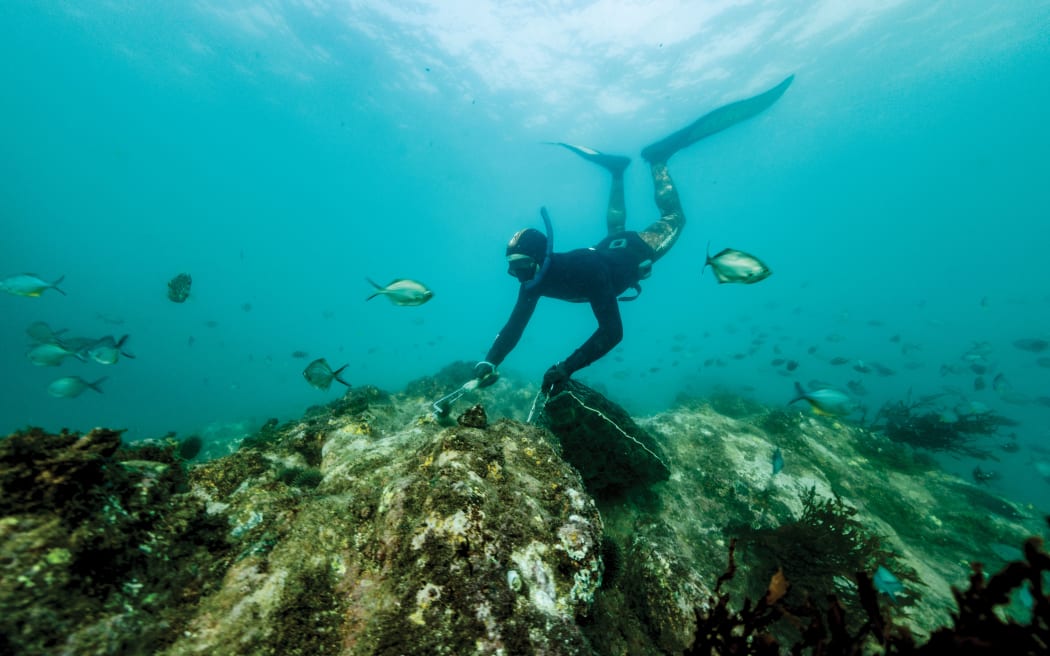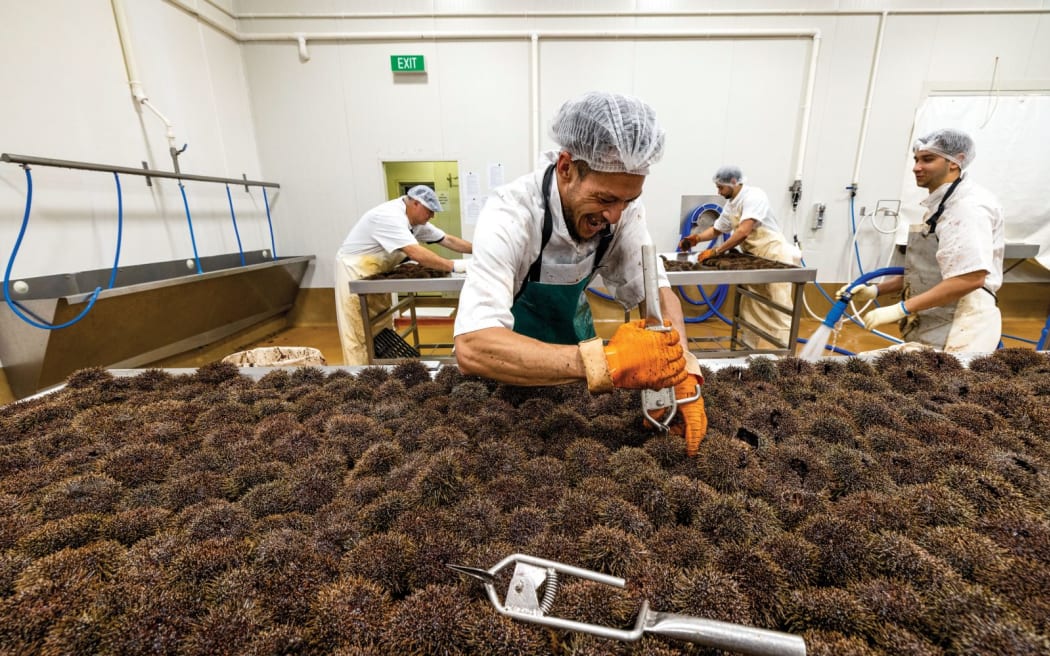
Todd Herbert collects kina from a barren for Envirostrat, which is collaborating with Ngāti Porou Seafoods, international startup Urchinomics, and commercial fishers from Sea Urchin NZ. Photo: © Richard Robinson
Follow Our Changing World on Apple Podcasts, Spotify, iHeartRADIO or wherever you listen to your podcasts
The kina are out of control. As many as 40 urchins crowd into a single square metre of rock, devoid of other life.
A kina barren is a symptom of an ecosystem out of balance. Could we eat our way to a solution?
Kina zombies
Kina numbers have exploded as we've eaten too many of their predators – like big snapper and crayfish – that usually keep them in check.
The urchins munch through kelp and seaweed, leaving bare rock and little else. The kina themselves end up suffering too – they persist in these zones as zombies, eating little and barely producing any roe.
Luckily, these barrens can be reversed and kelp forests restored when the kina are removed.
Putting kina on the table
Kina-nomics involves taking starving kina off reefs, fattening them up and selling them to an East Asian market.
But how can the kina be made more consistently tasty? And can economic and conservation goals really align?
Listen to the episode to dive under the water with a kina harvester, taste some kina, and untangle whether a commercial harvest of these spiky taonga can really fix kina barrens.

At Peter Herbert’s kina factory on the Coromandel, Ashley Hine cracks kina open so his colleagues can scoop out the roe. Photo: © Richard Robinson
Learn more:
- Read the accompanying New Zealand Geographic article by Kate Evans, with photography by Richard Robinson.
- Listen to previous episodes of Voice of Tangaroa.
- Check out another effort to restore kelp forests with the Love Rimurimu project in Wellington, profiled in a recent Our Changing World episode.
- Jesse Mulligan spoke to another researcher studying kina removal in the Marlborough Sounds.

Photo: NZ On Air
Voice of Tangaroa is a joint production between RNZ’s Our Changing World and New Zealand Geographic.
Reporting for this series is Public Interest Journalism funded through NZ On Air. You can learn more and read the articles for free at www.nzgeo.com/seas

